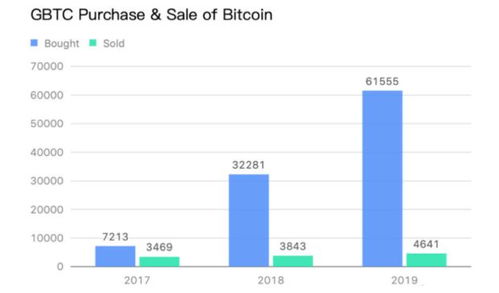In recent years, the surge of cryptocurrencies has transformed the global financial landscape, spawning a multi-billion dollar industry revolving around mining machines and hosting services. Europe, with its dynamic tech hubs and renewable energy resources, is rapidly emerging as a pivotal player in this blockchain revolution. Powering the blockchain here isn’t just about computational power; it’s an intricate dance of innovative mining rigs, efficient hosting farms, and sophisticated algorithms verifying every single transaction on networks such as Bitcoin (BTC), Ethereum (ETH), and other altcoins like Dogecoin (DOG).
The beating heart of any cryptocurrency ecosystem lies within its miners. These aren’t just individuals wielding powerful GPUs in their basements anymore; they are highly specialized mining farms equipped with state-of-the-art ASIC miners and custom-built rigs. Europe’s commitment to sustainable energy has spurred the development of environmentally friendly mining solutions that mitigate the traditionally high electricity costs and carbon footprints associated with crypto mining. This green revolution in mining activity is attracting enthusiasts and institutional investors alike, aiming to capitalize on the stable returns powered by block rewards and transaction fees.

Mining machines, often synonymous with ASICs (Application-Specific Integrated Circuits), operate far beyond the capabilities of CPUs or GPUs, delivering unparalleled hashing power that keeps Bitcoin and Ethereum blockchains secure and functional. Hosting these machines, however, introduces a new logistical layer—enter mining machine hosting services. These providers offer dedicated facilities with optimal cooling systems, robust internet connectivity, and 24/7 monitoring, effectively removing the burdens of setup and maintenance from individual miners. Clients can lease or purchase mining rigs, have them installed in these professional environments, and enjoy passive income streams without technical headaches.
The diversification in cryptocurrencies has resulted in the need for versatile mining machines optimized for different algorithms—SHA-256 for Bitcoin, Ethash for Ethereum, and Scrypt for Dogecoin. Europe’s mining farms often balance portfolios of diversified rigs to maximize revenues and hedge against volatility in any single coin. Notably, the introduction of Ethereum’s shift toward Proof of Stake (PoS) mechanisms challenges the traditional mining paradigm. Yet, Bitcoin remains the undefeated titan demanding immense computational prowess, where miners play an irreplaceable role securing the network via Proof of Work (PoW).

As cryptocurrency exchanges continue to flourish, the role of miners becomes even more critical. Every transaction streamed through these exchanges requires validation—a process directly linked to the mining hardware’s efficiency. High-performance miners that secure Bitcoins essentially act as sentinels safeguarding the integrity of all crypto assets on trading platforms. Moreover, mining machine manufacturers in Europe actively innovate to push power efficiency boundaries, crafting rigs that yield better hash rates per watt consumed, a vital metric in today’s energy-conscious world.
Dogecoin, once perceived as a meme coin, has established a surprising resilience partly due to its mining strategy, which parallels Litecoin’s Scrypt algorithm. Hosting these specific mining rigs demands tailored cooling and computational approaches. European mining farms specialize in scaling these operations, offering miners a competitive edge. Similarly, the evolving Ethereum landscape challenges hosters to adapt swiftly, hosting miners that adjust to network upgrades and forks, thereby ensuring seamless mining continuity.
Mining rig construction—a meticulous fusion of hardware design, firmware optimization, and hardware-software synergy—is an art as much as a science. European manufacturers excel by integrating not only ASIC chips but also top-tier power supplies and heat dissipation systems, resulting in compact yet ferociously efficient mining units ready to be deployed in hosting farms across the continent. The synergy between cutting-edge rigs and hosting infrastructure manifests in impressive uptime rates and maximized profitability for miners.
In an era where cryptocurrency regulation is becoming increasingly nuanced across Europe, mining service providers ensure compliance with local laws while advocating for transparency and security. They equip miners with real-time analytics portals, facilitating network difficulty tracking, hash rate distributions, and payout reports to maintain trust within the crypto ecosystem. For Bitcoin miners, whose profitability often fluctuates with BTC price volatility and block halving events, having access to precise hosting data is invaluable for making strategic decisions.
Miners in Europe can also tap into renewable energy sources—hydroelectric, wind, and solar—making mining farms sustainable powerhouses that dramatically reduce operational costs. This strategic exploitation of green energy not only aligns with the European Union’s environmental goals but also future-proofs mining businesses amidst escalating energy prices. Consequently, the synergy between mining hardware and green energy is rapidly rewriting narratives about the ecological impact of crypto mining.
Looking ahead, the convergence of advanced mining machines, reliable hosting services, and groundbreaking blockchain protocols portends a vibrant future for cryptocurrency mining across Europe. As Bitcoin continues its ascent as digital gold, Ethereum evolves into a decentralized application powerhouse, and altcoins like Dogecoin carve their niches, Europe’s mining landscape will remain at the forefront—powered by innovation, sustainability, and unyielding dedication to the blockchain ethos.